
An Inca Trail permit is the authorization that grants entry to the ancient Inca Trail to the sacred citadel of the Incas Machu Picchu. Currently there are different routes by which the visitor, depending on their time availability and physical ability, can explore the most beautiful landscapes from the Andes into the cloud forests. For all these circuits, the purchase of a ticket is required. Anyone wishing to take the tour must have a genuine permit obtained in their name in advance. Anyone attempting to hike without a permit will be turned away at the checkpoint at the start of the hike. To avoid scams, it is always recommended to obtain your Inca Trail permit through a travel agency authorized by the Ministry of Environment and the Ministry of Culture.
Obtaining permits to hike the Inca Trail to Machu Picchu can be quite complicated due to the unique restrictions and limitations imposed on visitors to protect the fragile environment of the region. The information we provide is based on data from the national governing body responsible for managing Inca Trail permits. This information will be updated as new information becomes available. It is not enough to just obtain the permit. To enter the Inca Trail, you must do so with an official guide and the respective support staff (cooks, porters).
Inca Trail permits are limited and offered on a first-come-first-serve basis. Only 200 visitors and 300 support staff are allowed on the trail per day, with the trekking season running from March through January each year. September is the month that Inca Trail trek permits go on sale, giving travelers a six-month jump on the June solstice. Information is detailed for individuals who want to take the time to plan their trek, set up reminders, and apply for permits to coincide with these opening dates.
The Inca Trail is one of the best-known and most popular walking trails in the world and is listed as one of the world’s ten best walks. It is considered that the trail was built as a processional route, which pilgrims walked to reach the temple of the sun, in Machu Picchu. The sun was the principal god of the Andean people (who were in search of the cult, the materialization of the god on earth). Since 1977, the area through which the Inca Trail is located extends 32,592 hectares, of which 28,571 are the surrounding park, and has been considered the Machu Picchu Historical Park, whose protective function is to guarantee the state of preservation of this unique area.
Along the Inca Trail, there are several Inca ceremonial temples. The town of Machu Picchu is located 2,400 masl, in the lower part of the agricultural zone, on the eastern slopes of the Peruvian Andes, allowing numerous and different forms of ecosystem combinations. The area is characterized by complex stratigraphic sequences and the presence of a large number of archaeological sites distributed throughout the kilometers of trail. The control that exists today is influenced by certain physical conditions, climatic extremes, and the high inclination of the trail on certain stretches. Without forgetting the optimal use of water sources, being aware of using Inca settlements.
| mess | año | fecha | |||
The Inca Trail, or “Qhapaq Ñan,” represented the main road system of the Inca Empire, more specifically a network of royal roads. The Inca road system had religious, political, and military importance, considered the three main goals that the road pursued. Important economic benefits were also derived, which allowed Cusco to maintain cultural and political control over a territory as vast as the Inca Empire, which was estimated to be 4,000 kilometers long from north to south and 400 kilometers wide from coast to Amazonas. It has been noted that the Inca road network was more complex and varied than that of other territorial empires, such as those based in Rome, Mexico, or India.
The basic and most valued benefits were the ethical and physical fitness developments that they generated. Hiking became a key Inca ritual through which young men, chosen for their physical and mental qualities, developed these skills before participating in military adventures. Part of the Inca custom was to maintain excellent physical form in order to serve as a soldier and, in times of peace, as a worker. Those who managed to develop this physical form were highly regarded, both in society and among their peers. The Chasqui ran and knew no fatigue, since pain and suffering were the only things he sought and what made him stronger. He trained in the jungle, learning body language and running at intervals. The Inca emperors controlled their vast territory, with a network of runners that guaranteed rapid communication that connected the four divisions and all the subordinate regions. The runners usually stayed for a few days in the royal palaces located in Cusco, the capital of the empire located 3,300 meters above sea level, and then they would disperse throughout all the countries of the powerful Tawantinsuyu empire.
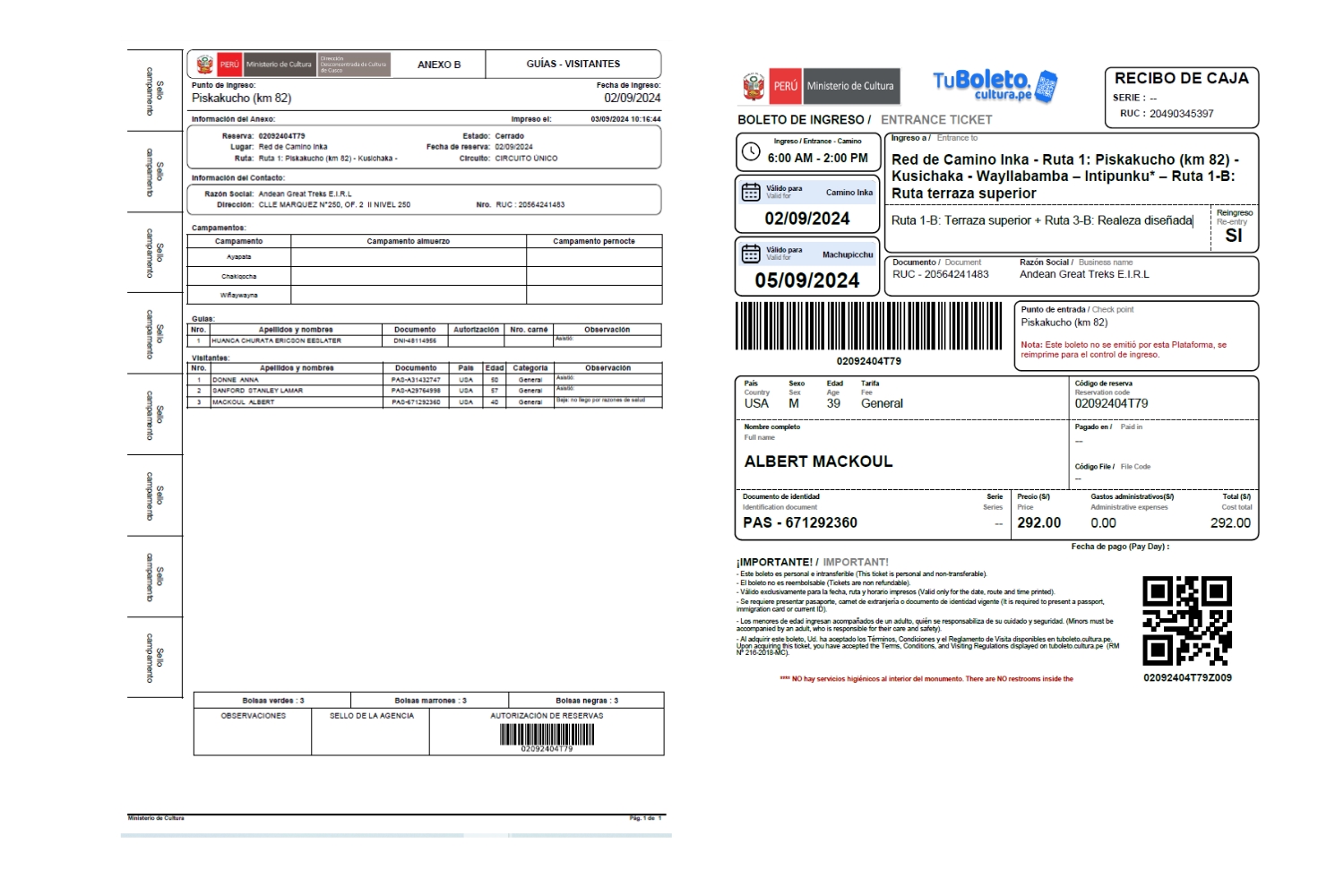
The Inca Trail permit has been designed to offer all trekkers the most authentic and fulfilling experiences on the famous and much-loved Inca Trail. This trail is a delicate thing and it makes sense to protect and preserve it in the most responsible way. Therefore, only by applying for your Inca Trail permit for a trek with Andean Great Treks can you be sure that you are investing in a trek that is guaranteed to make a difference to you and the people who manage these precious trails. Proceeding with anything less than an Inca Trail permit would be seriously inferior. This is a highly regulated trail so a permit is essential. The permit includes an arrival time on a scheduled date. Hikers are not free to start the trail at a later date. It is essential that you arrange your permit well in advance. The Peruvian government introduced the Inca Trail permit in 2000. It obliges the traveller to adhere to strict guidelines regarding ecological impact. This has the positive effect of keeping the Inca Trail clean. Book yours more than 6 months in advance.
When the Inca Trail was not a controlled trail, the trail was heavily used and has since become very degraded. Thanks to the introduction of the Inca Trail permit, the number of people hiking this historic trail has been drastically reduced. A legal limit of 200 hikers and 300 guides/porters, employed for the trek, are allowed to use the trail each day. And the only way to get the Inca Trail permit is to book it through a fully licensed travel agency in Peru. The Inca Trail permit is provided by the government at the Ministry of Culture office, which in turn issues the permit after having received from your licensed tour operator, a valid passport number and the deposit for the trek.
At first, you should consider doing the Inca Trail to Machu Picchu only with a local operator, who is authorized by the Ministry of Culture and the SERNANP (National Service of Natural Areas and Parks of Peru). These government entities are in charge of granting the permits for the use and exploitation of the Inca Trail circuits on their different access routes. To do this, companies must pass different filters, such as environmental protection with the use of biodegradable products, good treatment of their workers, with fair salaries. Travel agencies must also train their guides in heritage management courses, first aid, and above all the correct use of camping spaces.
After completing the previous stages, only a few companies are chosen to organize the guided and camping service on the Inca Trail to Machu Picchu. At this point, you will surely ask yourself the following question: Is this company trustworthy? Or perhaps how does it meet the standards you require? Well, to do this you should find out if it is a legal company with a presence in all the quality of service activities, such as the comments left by travelers who used their services, and if not, you should call them directly to be able to deepen your working alliances that you make with the different groups of visitors. For this reason, it is advisable to take the Inca Trail tour with travel agencies that have at least 10 years of experience in the management and organization of this trek to Machu Picchu.
Likewise, you will find a great difference in costs, this is because each company works with different sizes of groups, ranging from large, regular and private groups. At this point, Andean Great Treks only works with small groups, made up of 2 to 4 hikers, each group goes with its own camping equipment, cook, guide and porters, we work in this way so that our clients enjoy their visit to the Inca Trail to Machu Picchu in the best way.

In the month of October of each year, the sales system for all the Inca Trail circuits to Machu Picchu is opened. Only authorized agencies will participate in the competition to obtain one of the 500 daily spots for passengers who made their reservation many months in advance. If they could not have reserved for the day you chose, it is very important to provide alternative dates 1 or 2 days before or after your preferred date. This way, you will not be left without your permit to make the Inca Trail tour to Machu Picchu. Once the agency has obtained its spot, it must send you the reserved tickets, and with that you will be able to buy your plane tickets from your country to Peru.
There is a very important fact that you should know, which is that; May is one of the months that sells out in just 1 hour. Yes, friends, this month has a huge demand for tickets, as it is considered the best season to do the Inca Trail, due to the unbeatable weather conditions, where the geographic space you visit usually presents very clear days. Then comes the month of June, because in this month the entire city of Cusco is full of folkloric festivals of all kinds, where various towns and indigenous communities dance with very colorful music and dances.
Months that you should definitely NOT do the Inca Trail are the following months: December, January and March; this is because it is the rainy season in the southern hemisphere. Yes, friends, in these months there is a high probability of rain, snow, landslides, river swells, and the views are terrible due to the presence of cloud clusters and fog, which will ruin your dream trip to the country of the Incas.
A special date that will also be very popular with visitors is Easter, which usually falls at the end of March and beginning of April, so it is advisable to take some other less crowded routes, such as the routes of Lares, Ausangate, Choquequirao.
When you purchase a ticket to visit the classic Inca Trail to Machu Picchu, you are automatically ensuring your presence for the next year on your reserved date. Therefore, if after some time you decide not to participate in this excursion, you will not be able to request a refund or change the date, much less change the ticket to the name of another participant. The rules of the Inca Trail to Machu Picchu are very strict.
If at the time of making the reservation you indicated a number that was later changed to another, it is possible to modify the number on your passport. Even so, it is recommended that you bring a photo of your old passport, and with this prove to the park rangers that you are the holder of the ticket purchased in your name.
This Inca Trail ticket automatically includes circuit number 3, to visit Machu Picchu, so once travelers have arrived on the Inca Trail tour to Machu Picchu, they will have access only to the urban sector, for an estimated 2 hours. If they would additionally like to climb any of the mountains such as Huayna Picchu or Machu Picchu, they must purchase them separately, and many months in advance.
The Inca Trail ticket cannot be used on a date other than the original one, except in cases of force majeure, such as fires, landslides, protests, which are communicated only through the official channel of the Ministry of Culture of Peru.
If after the reservation date of the annual calendar of the Inca Trail has passed, you were not able to acquire a permit for the next year, we offer you the best alternative options of ancient Inca trails that also connect with Machu Picchu. In fact, Andean Great Treks is a travel agency specialized in organizing the best hiking circuits through places that are not very visited. One of the most recommended is the Ancascocha trail, since it gives access to an Inca trail that will take you through ancient Inca temples.
Another good option is to take the Inca quarry route, where you can explore the sacred temples of Perolniyoq, the impressive Sun Gate, with a 360° view of the Sacred Valley of the Incas, and the snowy Veronica mountain.
You can also visit the mysterious archaeological complex of Choquequirao, where you will have the opportunity to tour the impressive Inca constructions with great architectural and landscape contrasts.
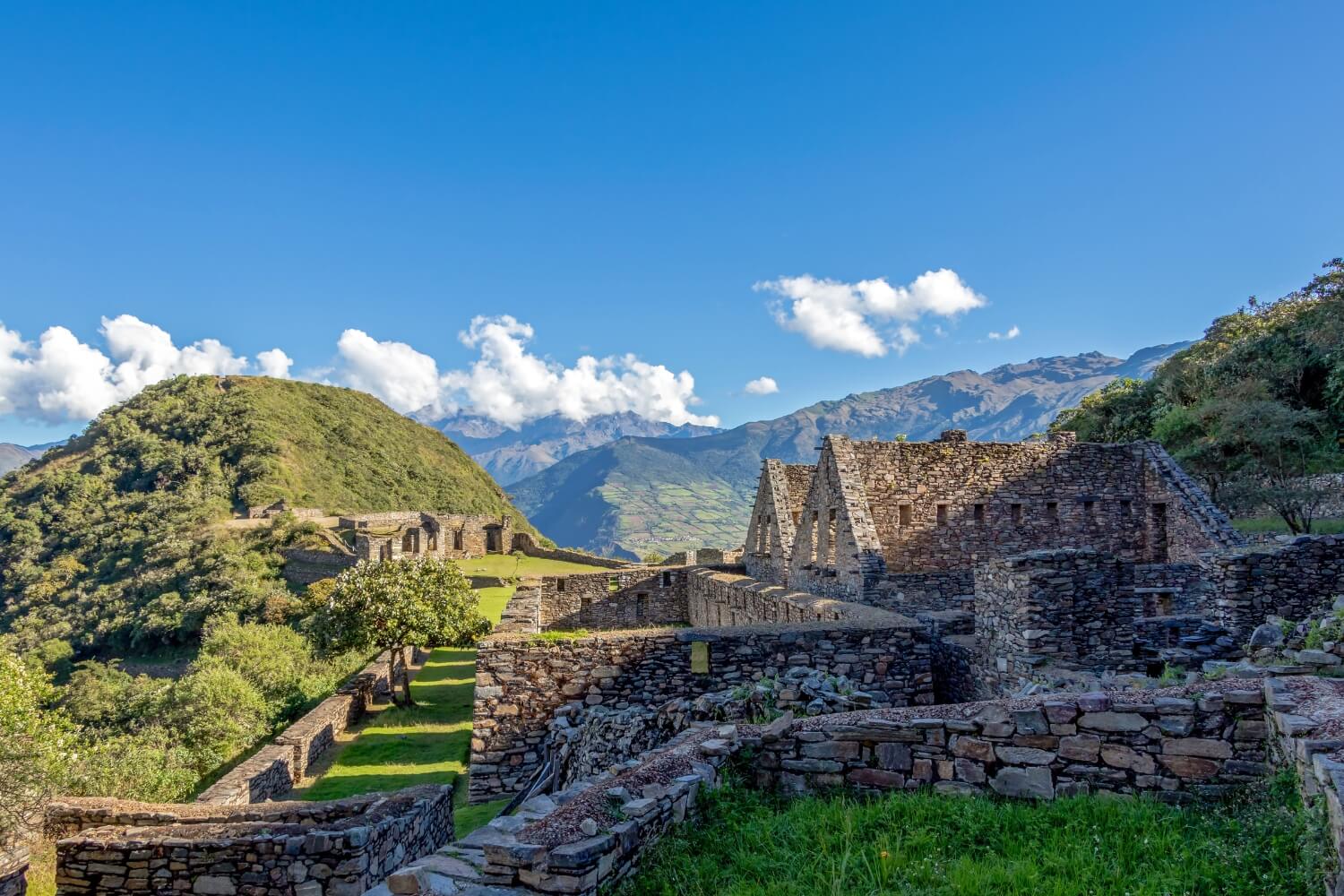
Yes, friends, as the question describes; circuit number 5, which is the 2-day Short Inca Trail route. This alternative Inca Trail to Machu Picchu option is offered to all visitors who wish to take a short walk exploring the imposing Wiñaywayana Palace, which is the most beautiful site of the entire Inca Trail circuit to Machu Picchu, culminating in the famous Sun Gate, Inti Punku, from where you will take the best panoramic photos of Machu Picchu, surrounded by forested mountains.
This option usually almost always has available spaces, and is highly recommended for any type of visitor, who practices sports, hikes, and likes nature and the outdoors. Andeamn Great Treks will be happy to organize this private tour for you, your friends and your family. You just have to check our website for the 2-day Inca Trail tour reservation calendar. And sign up for any of our daily groups that leave every day.
There are hundreds of archaeological sites located along the Inca Trail, many of which were only recently discovered and are virtually unknown to tourists and government officials alike. Some of the most important and frequently visited sites include Runcuracay, Sayamarca, Phuyupatamarca, Wiñaywayna and Intipunku. However, there are around 400 sites located along the trail, and these are just the Inca sites, not the countless pre-Inca ruins. Most of these ruins have no special significance and are just ruined platforms, walls or foundations of originally Inca buildings. However, the main sites are often impressive. Many of the ruins have little more than wonderful locations to recommend them, but this is a considerable advantage as few people ever get to see them. It is possible to set up a reasonable camp anywhere along the trail, and it is usually easy to find water, although it is sensible to purify it if you are not too far above inhabited areas.
The Inca Trail is 25 miles (40 km) long. The highest altitude is reached at the first pass, Warmiwañuska, at 4,215 m (13,780 ft). The trail descends to 2,650 m (8,700 ft) at Machu Picchu. The other two passes are not as high, but are also on steep uphill and downhill terrain. Each construction made by the Incas is unique and has no other similar anywhere. For example, on the first day you can see the residence of Patallaqta, an urban and religious center where pilgrims used to make large offerings to the mountains and Mother Earth before entering the sacred city of Machu Picchu. It is so large that it has hydraulic systems, residences, temples and agricultural terraces, worthy of comparison with the capital of the Incas, Cusco.
Even with the passage of time, many of these ancient buildings remain unchanged, just as their last inhabitants left them. The material that was used to achieve this great feat is white granite, which was carved by the skilled Inca architects. It is perhaps this characteristic that makes the Inca Trail tour unique, where you can explore the royal residences of the most powerful emperors of the Inca Empire.
While technically you could show up without experience and set out on the trail, it is not recommended. For starters, you will have to endure high altitudes, so there is a chance that you will suffer from altitude sickness regardless of your physical health. That is why we recommend all our enthusiastic adventurers to practice some short hikes in their home country, do some kind of sports, go to a gym. But perhaps the most important thing is the desire you will put into overcoming any obstacle. On the tour we organize, we basically adapt to your walking pace, which is why we only organize this tour in small groups. In that scenario you will have enough time to make stops, photograph the beautiful landscapes, learn about history with your local guide.
Many of our passengers are not expert hikers, but they managed to successfully complete this great challenge in the Andes. You will always be accompanied at all times by the high mountain guides, who will be able to identify any symptoms of altitude sickness, which could significantly impair your walk along the Inca Trail to Machu Picchu. If you feel that your body is at its limit, it is best to listen to the experts and take the retreat route to Cusco where you can regain your energy, and then you will join your group in Machu Picchu.
Hiking along the Inca Trail will confront you with steep climbs and difficult terrain, so a good level of fitness is recommended. While the team will provide you with the equipment, you are responsible for what is possibly the most important part: comfortable walking shoes. You should invest in a quality pair of waterproof hiking boots and break them in. Wear them at home, try them on at the supermarket and take a few steps in them before you head out on the trails. Don’t let physical preparation discourage you; just move your legs and you will be fine. You don’t even have to worry about strengthening your upper body, porters will carry your tents and gear for you, so you’ll only have to carry your day pack.
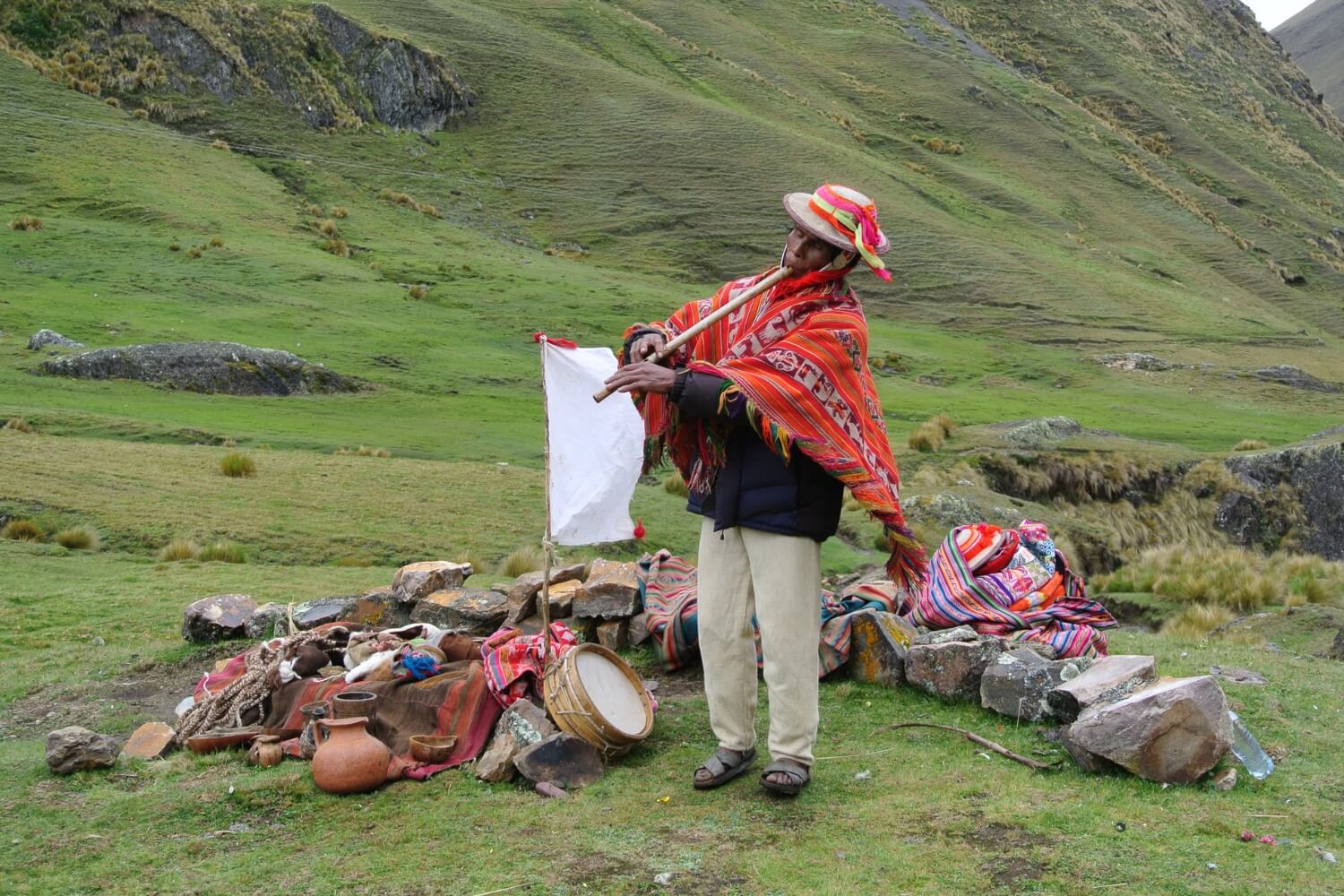
The Inca Trail is a historic route that connects the Inca Trail and Machu Picchu and is one of the most famous and wonderful trekking experiences in the world. Every year, thousands of hikers take up the challenge and enjoy the archaeological sites, the incredible variety of flora and fauna, and the breathtaking panoramas with Machu Picchu in the background.
In fact, there are age limitations to do the Inca Trail. The minimum age to do it is 12 years old, but they are only allowed to do the 2-day Inca Trail to Machu Picchu. All candidates under 18 years old must be accompanied by a legal guardian. Otherwise, check with a qualified operator first as the limits can change. There is no maximum age limit for the Inca Trail to Machu Picchu; they only ask that a doctor certifies at the office that they are healthy for the trek. There are many factors to consider to determine if you are the right age for this trek and can complete this adventure. For hikers over 50 years of age who are in good physical condition, do not suffer from back, joint or heart problems and have previous trekking experience, there should be no problem. It is important to have a good level of fitness and be well prepared to walk at that altitude (maximum 4,215 m) if you are thinking of doing the Inca Trail.
On the four-day trek, visitors should try to minimize their impact on the environment through a few guidelines. The most important thing to remember is that you are a guest walking through what is essentially someone’s backyard. It is very important to leave the area as untouched as possible. Along with these guidelines, we encourage hikers to take responsibility for their actions by using the proper facilities and cleaning up any trash they create.
Please use the designated camping areas for bathroom needs. This will allow us to focus our cleaning efforts on these areas and will help keep the rest of the trail less disturbed. Small trowels are provided so hikers can properly dispose of their bodily waste. Please take all trash and waste, including snack wrappers, back to camp. Take the time to pick up trash left behind by others and deposit it in the proper facilities. The more people staying on the trail, the more trash will be inevitable. The use of plastic water bottles is discouraged; hikers are encouraged to bring reusable bottles filled with water or water purification tablets. Garbage collection services are available at campsites. Lubricants and other mineral oils should be disposed of in designated areas, such as campsite latrines, where vegetation can break them down. In fact, it is preferable to bring biodegradable snacks and detergents. If garbage contaminates, unless it rains, it should be taken out. Local cooks can arrange this for a small fee.
Although it is a surprising fact for many of us, there are no medical facilities along the Inca Trail. If you are lucky, you may encounter the Red Cross at the first or last campsite on the Inca Trail, as they have been offering medical facilities for locals free of charge for many years. However, this assistance is offered to porters, camp custodians and Inca Trail rangers (not tourists walking the trail) at their campsite infrastructures.
We encourage everyone who wishes to undertake this 4-day Inca Trail trek to Machu Picchu to be in the best physical and mental health and always be well equipped medically or informed about weaknesses related to their health in order to enjoy the best trek of their life. Please note that your tour guide may refuse to continue hiking the Inca Trail in case he or she considers your health to be a risk for you to continue, even if there is a risk to your life.
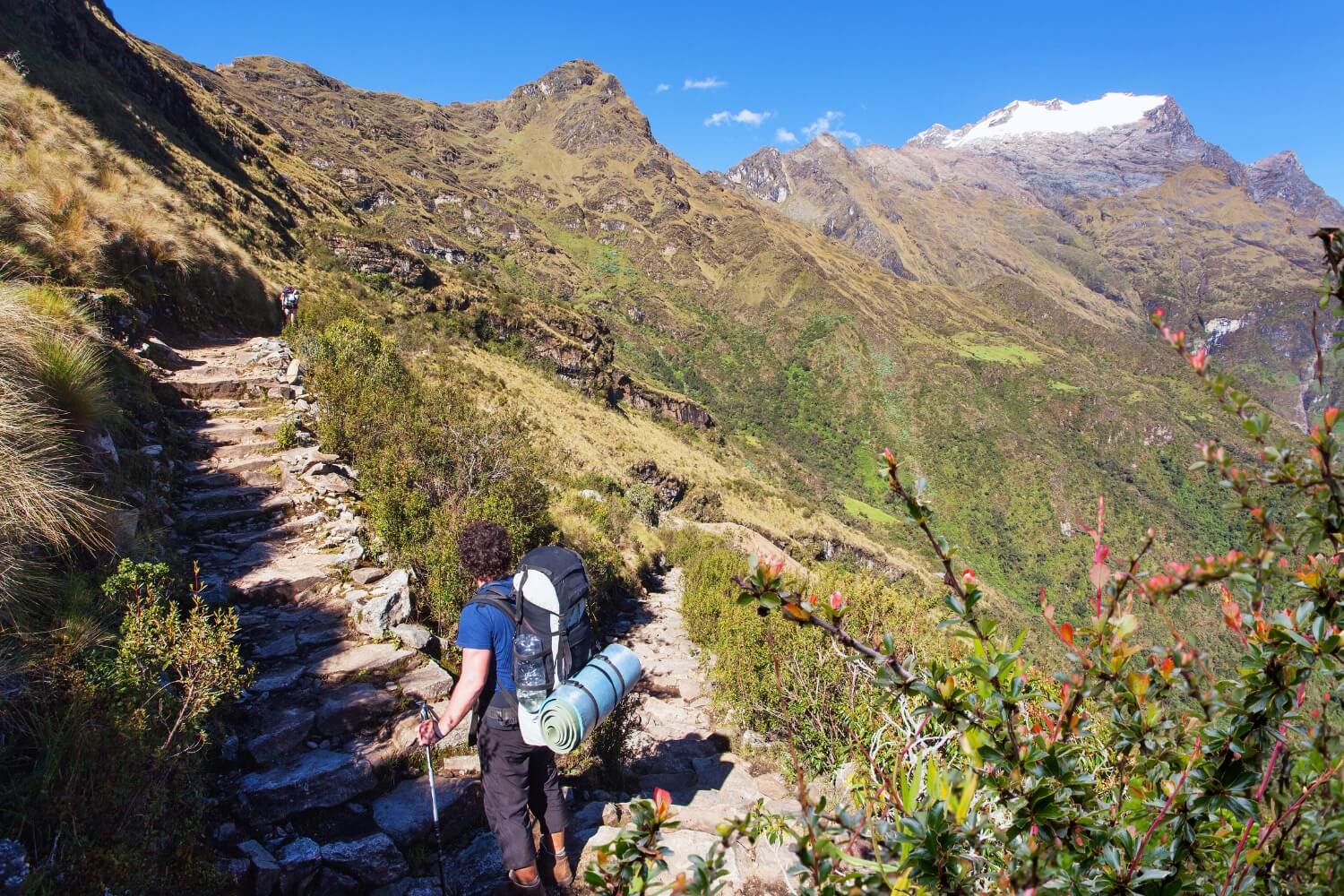

Discover the largest trail used by the Incas, to communicate between the sacred cities of Machu Picchu and Choquequirao, passing through the high mountains of the snowy Salkantay. Our tour is designed for lovers of the most demanding trekking circuits.
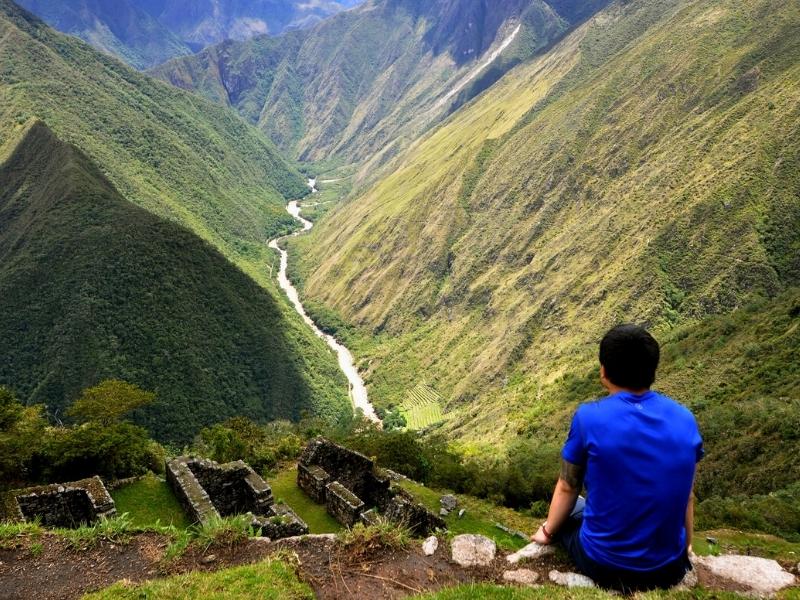
Explore the Manu Amazon Rainforest & Inca Trail hike to Machu Picchu, you will enjoy the best adventures in Peru, exploring amazing inca trail routes and the best amazon wildlife with our local tour guides, in small groups.
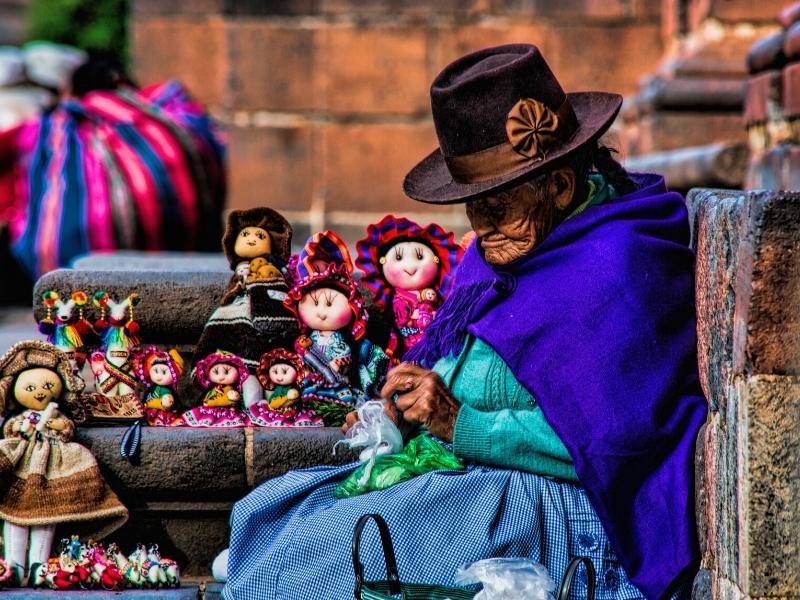
Peru is a multicultural country, and megadiverse, because it has different ecological floors, which have special microclimates, where ancient civilizations dominated the cold landscape of the Andes, and the hot coasts of the Pacific. It is also part of the great Amazon forest where a great variety of unique animals and plants coexist. This tour will take you to the most impressive landscapes in South America.


Dive deep into the culture and landscapes of Peru with this adventure to Machu Picchu, the Amazon and more. Search for wildlife along jungle trails and rivers in the rainforest from a comfortable lodge then head up into the Andes to Cusco, the capital of the Inca empire.


One of our most popular trips in Peru combines the cultural heritage of the Sacred Valley and the challenge of doing one of the most popular hiking trails in the world. The four-day trek on the Inca Trail will reward you with a stunning combination of the area's ruins, mountainous landscapes, and cloud forests.


The classic Inca Trail hike to Machu Picchu is one of the world's greatest hikes. Along the 45 km you will explore unique andean valleys, lush mountain forest.An exquisite architecture of the Inca sanctuaries, which will dazzle you for its fineness and location within the Andes.